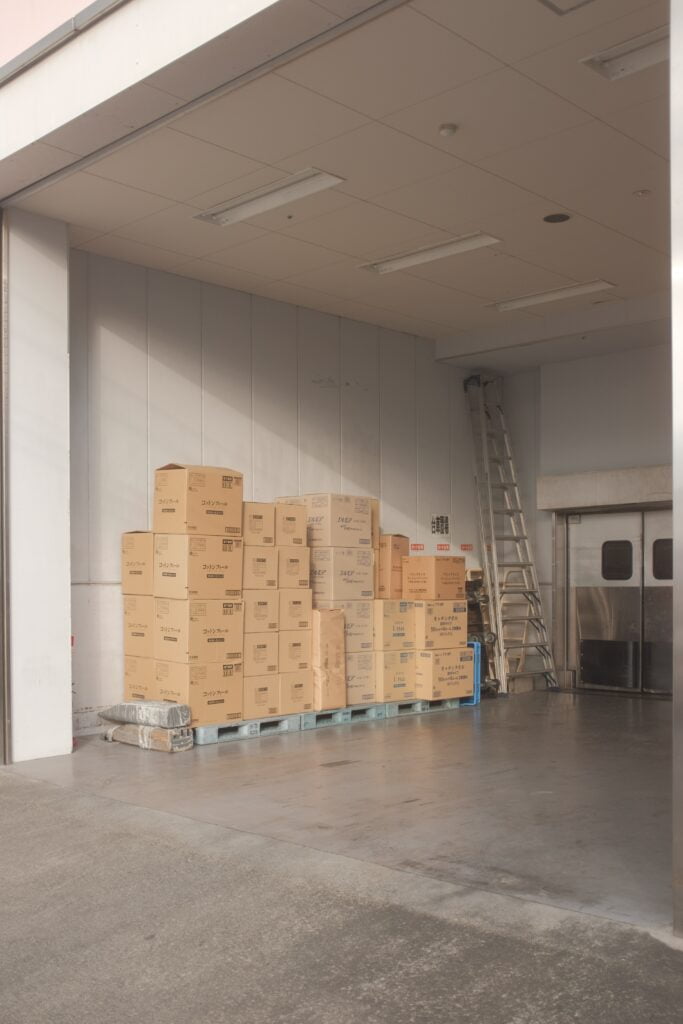In the realm of off-grid living, the decision of what to sit a shipping container on holds significant weight. Whether it be for housing, storage, or a creative DIY project, the choice of foundation can greatly impact the durability, stability, and functionality of the container itself. This article explores the various options available and evaluates the pros and cons of each, ultimately aiming to guide individuals towards the best choice for their specific needs. From concrete slabs to steel beams, from wooden piles to helical pier systems, the quest for the ideal foundation begins.
Types of Foundation for Shipping Containers
A solid foundation is crucial for the successful placement and stability of shipping containers. Several different foundation options are available, each offering unique advantages and considerations. In this article, I will discuss ten different types of foundations commonly used for shipping containers.
Concrete Foundation
A popular choice for shipping container foundations is a concrete slab. Concrete offers excellent durability and stability, making it suitable for various ground conditions. It provides a sturdy base for the container, ensuring it remains level and secure. Concrete foundations can be poured onsite or precast, depending on the specific requirements of the project.
Piles or Posts
Another option for supporting shipping containers is the use of piles or posts. Piles are long, slender columns driven into the ground to create a stable foundation. They can be made of wood, steel, or concrete, depending on the desired load-bearing capacity. Posts, on the other hand, are typically used to support the corners of the container. Both piles and posts offer flexibility in terms of adjusting the height and levelness of the container.
Gravel or Crushed Stone
Gravel or crushed stone foundations are cost-effective and relatively easy to install. They provide good drainage and can help prevent moisture buildup under the container, which could lead to corrosion. However, this type of foundation may not be suitable for all ground conditions, particularly those with poor stability or high water tables.
Asphalt Pad
An asphalt pad is a viable option for container foundations, especially in areas where the ground conditions are suitable for such materials. Asphalt offers the advantage of being readily available and easy to install. Additionally, it provides a smooth surface for container placement and can withstand heavy loads. However, regular inspection and maintenance are necessary to ensure the integrity and longevity of the asphalt pad.
Concrete Piers
For areas with rocky or uneven terrain, concrete piers can be an ideal foundation solution for shipping containers. Concrete piers are poured into cylindrical holes dug into the ground and provide stability for the container. They offer the advantage of being able to adapt to irregular ground conditions, ensuring a level and secure base for the container.
Railroad Ties
Railroad ties, also known as sleepers, have long been used in construction projects and can serve as a foundation for shipping containers. They are typically made from hardwood, making them durable and resistant to decay. Railroad ties offer a cost-effective solution, especially when local availability is high. However, it is important to consider their environmental impact and potential risks associated with chemical treatments.

Helical Piers
Helical piers, or screw piles, are an innovative foundation option for shipping containers. These piers have spiral-shaped blades that are mechanically screwed into the ground, providing stability and load-bearing capacity. They can be an excellent choice for sites with challenging soil conditions or areas where traditional foundations may not be feasible. However, the installation of helical piers requires specialized equipment and expertise, which can increase the overall project cost.
Steel Beams
Steel beams can be used to create a sturdy and reliable foundation for shipping containers. These beams are typically placed horizontally, either directly on the ground or with the assistance of concrete footings. Steel beams offer excellent load-bearing capacity and can accommodate a wide range of ground conditions. However, it is important to consider potential corrosion risks and take appropriate measures to protect the beams from moisture and environmental factors.
Timber Decking
Timber decking provides a versatile and aesthetically pleasing foundation option for shipping containers. It involves constructing a wooden platform on which the container rests. Timber decking is relatively cost-effective and can be easily customized to accommodate specific site requirements. However, regular maintenance is essential to prevent rot, decay, and pest infestations, particularly in areas with high moisture levels.
Shipping Container Footings
Specifically designed for shipping container placement, container footings offer a convenient and efficient foundation solution. These footings are typically made of steel and are designed to distribute the weight of the container evenly across a larger surface area. Container footings can be easily installed and provide a stable base for the container. However, their use may be limited to specific container sizes and configurations.
Considerations for Choosing the Best Foundation
When selecting the foundation type for a shipping container, several important factors must be taken into consideration. These considerations ensure that the chosen foundation meets the specific requirements of the project and provides a long-lasting and secure base for the container.
Weight and Size of Container
The weight and size of the shipping container are crucial considerations when choosing the foundation. Different foundation types have varying load-bearing capacities, and it is essential to select a foundation that can adequately support the weight of the container, its contents, and any additional loads. Additionally, the dimensions of the container should be taken into account to ensure a proper fit and alignment on the chosen foundation.
Ground Conditions
The ground conditions at the site play a significant role in determining the appropriate foundation type. Factors such as soil stability, drainage, and water table levels should be assessed to ensure the chosen foundation can withstand the specific ground conditions. In areas with poor soil stability or high moisture content, foundations that offer better load distribution and drainage may be preferred.

Climate and Weather
The climate and weather conditions of the location where the shipping container will be placed should be considered when selecting a foundation. Areas with high rainfall, extreme temperatures, or frequent seismic activity may require foundations that provide additional stability, durability, and protection against potential damage. It is important to choose a foundation that can withstand the specific climate and weather conditions of the site.
Longevity and Durability
The longevity and durability of the chosen foundation are crucial factors to consider. The foundation should be able to withstand the test of time and various environmental factors without significant degradation or structural issues. Factors such as material quality, resistance to corrosion, and the ability to withstand ground movements should be evaluated to ensure the longevity and durability of the foundation.
Budget Constraints
Budgetary considerations are often important when choosing a foundation for a shipping container. Different foundation types vary in terms of cost, and it is essential to select a foundation that aligns with the project’s budget constraints. However, it is important to strike a balance between cost-effectiveness and the foundation’s ability to provide adequate support and stability for the container.
Ease of Installation
The ease of installation is another consideration that can impact the choice of foundation. Foundations that require complex or specialized installation techniques may incur higher labor costs and longer project timelines. Conversely, foundations that offer ease of installation can help expedite the placement of the shipping container and reduce overall project costs.
Access and Transportability
Considerations related to access and transportability should be taken into account when choosing a foundation type. If the shipping container needs to be relocated in the future, a foundation that allows for easy removal and reinstallation may be preferable. Additionally, the availability of construction equipment and machinery required for the foundation installation should be evaluated to ensure a smooth and efficient process.
Building Codes and Regulations
Adherence to local building codes and regulations is of utmost importance when selecting a foundation for a shipping container. Different jurisdictions may have specific requirements regarding foundation design, load-bearing capacity, and safety standards. It is essential to consult local authorities and ensure that the chosen foundation meets all relevant regulatory requirements.

Future Modifications and Adjustments
Future modifications and adjustments should be considered when choosing a foundation for a shipping container. If there is a possibility of expanding or modifying the container setup in the future, the foundation should be compatible with such changes. Flexibility and adaptability in the foundation design can help accommodate future modifications without significant structural modifications or foundation replacement.
Aesthetic Considerations
Though primarily functional, the foundation can also contribute to the overall aesthetics of the shipping container setup. Foundations that offer visual appeal or can be integrated seamlessly into the surrounding landscape may be preferred in certain cases. Aesthetics should be considered alongside other functional factors to ensure a harmonious and visually pleasing container placement.
Advantages and Disadvantages of Different Foundation Types
Each type of foundation for shipping containers has its advantages and disadvantages. It is important to consider these factors when making a decision to ensure that the chosen foundation meets the specific requirements of the project. Let’s explore the advantages and disadvantages of each foundation type:
Concrete Foundation
Advantages:
- Excellent durability and stability
- Suitable for various ground conditions
- Provides a level and secure base for the container
Disadvantages:
- Requires specialized equipment and expertise for installation
- Can be time-consuming and labor-intensive
- May have higher upfront costs compared to other foundation types
Piles or Posts
Advantages:
- Provides flexibility in adjusting the height and levelness of the container
- Can be made of different materials, depending on load-bearing requirements
- Offers stability and load distribution for the container
Disadvantages:
- Installation may require certain expertise and equipment
- May have limited load-bearing capacities depending on the materials used
- Requires regular inspection to ensure structural integrity
Gravel or Crushed Stone
Advantages:
- Cost-effective and relatively easy to install
- Provides good drainage and prevents moisture buildup under the container
- Suitable for various ground conditions
Disadvantages:
- May not be suitable for areas with poor soil stability or high water tables
- Requires periodic maintenance to ensure proper compaction and stability
- May not provide the same level of load-bearing capacity as other foundation types
Asphalt Pad
Advantages:
- Readily available and easy to install
- Provides a smooth surface for container placement
- Withstands heavy loads and offers good stability
Disadvantages:
- Regular inspection and maintenance required
- Susceptible to cracking and degradation over time
- May not be suitable for all ground conditions
Concrete Piers
Advantages:
- Adaptable to irregular ground conditions
- Provides stability and load-bearing capacity
- Ensures a level and secure base for the container
Disadvantages:
- Requires professional installation
- Can be labor-intensive and time-consuming
- May have higher upfront costs compared to other foundation types
Railroad Ties
Advantages:
- Cost-effective, especially with high local availability
- Resistant to decay and durable
- Provides a stable base for the container
Disadvantages:
- Environmental concerns and potential risks associated with chemical treatments
- May require regular maintenance to prevent decay and pest infestations
- Limited load-bearing capacity compared to other foundation types
Helical Piers
Advantages:
- Suitable for challenging soil conditions and areas with limited access
- Offers stability and load-bearing capacity
- Can be installed with minimal disruption to the site
Disadvantages:
- Requires specialized equipment and expertise for installation
- Higher upfront costs compared to other foundation types
- Limited availability in certain regions
Steel Beams
Advantages:
- Excellent load-bearing capacity
- Suitable for various ground conditions
- Can be combined with concrete footings for added stability
Disadvantages:
- Potential corrosion risks require appropriate protection measures
- Needs specialized equipment and expertise for installation
- May have higher upfront costs compared to other foundation types
Timber Decking
Advantages:
- Versatile and aesthetically pleasing
- Relatively cost-effective and easily customizable
- Offers a stable platform for container placement
Disadvantages:
- Requires regular maintenance to prevent rot, decay, and pest infestations
- Limited load-bearing capacity compared to other foundation types
- Susceptible to moisture-related issues in high-moisture areas
Shipping Container Footings
Advantages:
- Specifically designed for shipping container placement
- Offers a stable and evenly distributed load-bearing surface
- Easy to install and suitable for different container sizes
Disadvantages:
- Limited to specific container sizes and configurations
- May have higher upfront costs compared to other foundation types
- Requires proper preparation and leveling of the site
Conclusion
Choosing the best foundation for shipping containers involves careful consideration of various factors such as weight and size of the container, ground conditions, climate, durability, budget constraints, ease of installation, access, regulations, future modifications, and aesthetic considerations. By evaluating the advantages and disadvantages of different foundation types, one can make an informed decision that ensures the stability, longevity, and functionality of shipping container setups. Whether it’s a concrete foundation, pile or post system, gravel or crushed stone, asphalt pad, concrete piers, railroad ties, helical piers, steel beams, timber decking, or shipping container footings, each option has its strengths and weaknesses. Balancing the specific requirements of the project with these foundation considerations will lead to the most suitable choice for a successful shipping container foundation.




